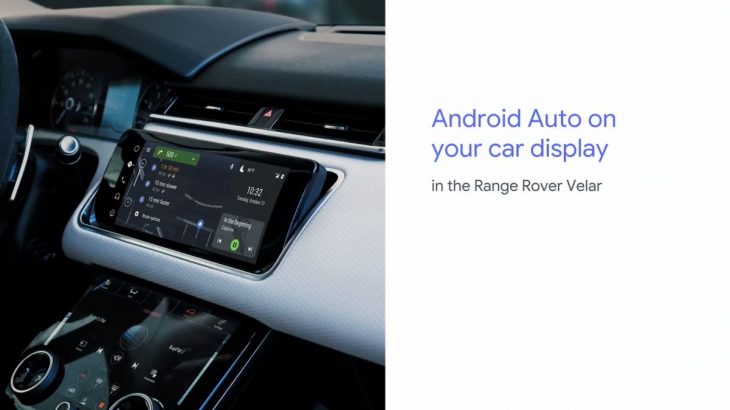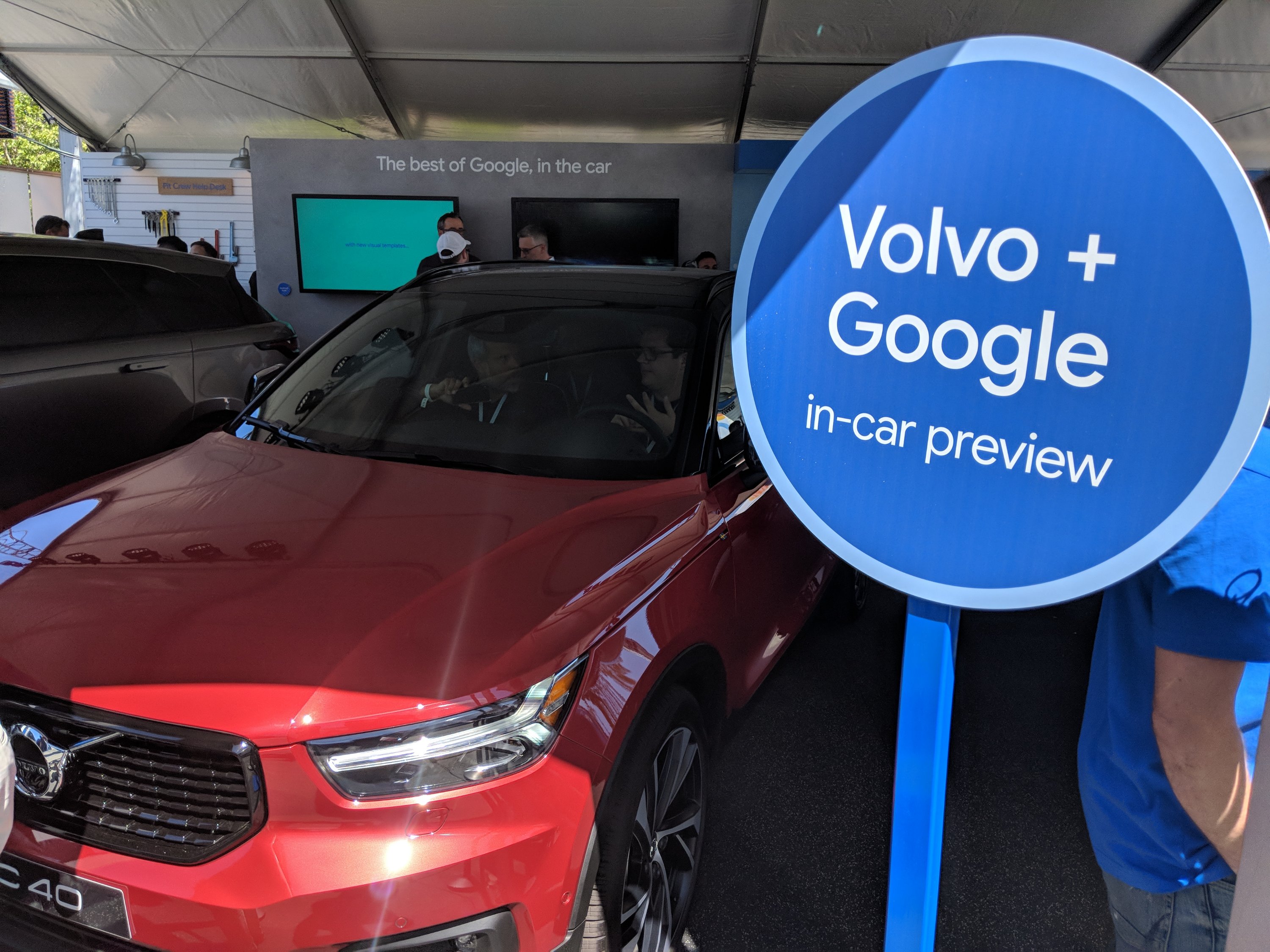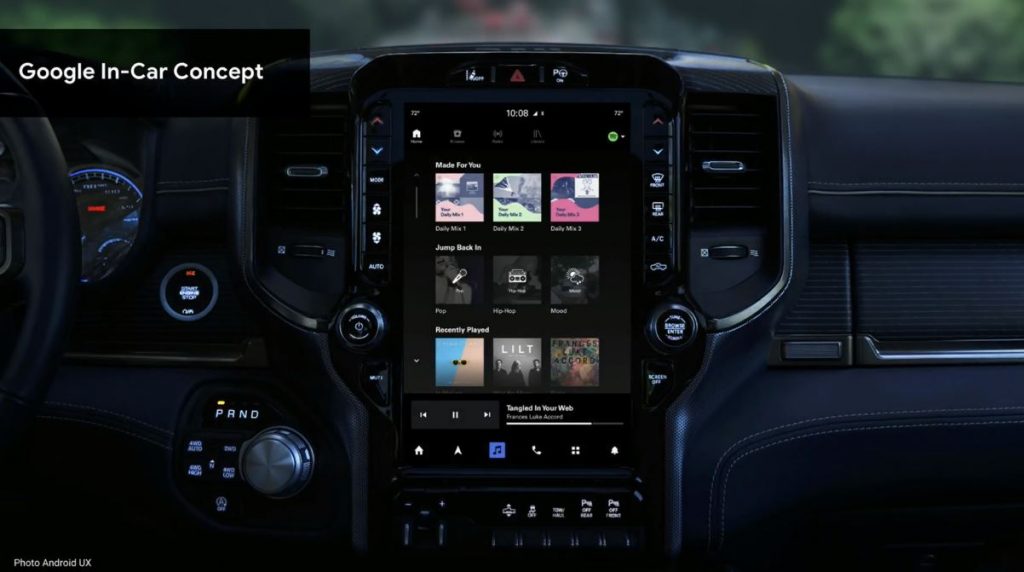
Why all manufacturers do not include some form of Android in their car infotainment systems baffles me. Every single car manufacturer’s proprietary software is slow, boring and just not a great fit in 2018. On the other hand Google’s Android Auto, and Android in the car is bright, it’s colourful, it’s very easy to use, it’s safe and requires absolutely no maintenance by the car manufacturer.
Where is it at?
For these reasons Android and Android Auto are slowly making inroads into the automotive industry. Even with it’s slow inroads Google trumpeted some impressive figures this week at Google IO 2018. Android Auto is in over 500 different models from 50 different brands. The past 12 months have seen launches of Android Auto in Fiat, Alpha Romeo, Smart and Tata Motors with 2018 expected to bring new launches from Jaguar/Landrover, Mazda and more.
This year so far we have seen the first Android Auto Wireless units launch from JVC-Kenwood and with over 300% user growth and an over 200% increase in the number of apps on the Play Store in the last year it is expected that the adoption by not just users but also manufacturers will increase (hopefully) exponentially in the coming years.
Android Auto can now also take advantage of Actions built for Google Assistant increasing its functionality even more. This coming year Google are looking to bring even more functionality to Android Auto (and Android Automotive — distinction coming later) with Android P this year.
What is to come?
This year Google are overhauling the Android Auto UX, promising big changes that will benefit everyone — consumers, developers and manufacturers. The problem Android Auto faces is that there are different types of inputs available. There are different sized displays, locations of the display, aspect ratio and pixel density. Then to input to Android Auto the user can use touch, a touch pad, a rotary dial or a hybrid of the above.
Google plans to simplify the user interface even more to allow it to better scale to the different screen sizes and adapt for the future and to promote predictability and bringing to the forefront what users want to see.

The first change they are bringing is to the messaging service. The new notifications will bring more and unified actions across the services to allow users to react with their content without ever leaving their current experience.

Google have also introduced a new media template for developers allowing them to easily develop for the large number of display sizes and densities. This new architecture will bring content “out of the drawer” to allow drivers to see content faster and easier and to get their eyes back on the road faster – the new grid view looks to be visually stunning and easy to use. Yes, these new changes will be available in all versions of Android Auto, not just head units.
As you would expect with Google being the search king they have added a new search and pivot capability into the Google Assistant on Android Auto to allow users to not just start playing a song/media but also pivot into the app itself to display the search results.
These changes may seem fairly minor but there are a lot more projects Google are working on in the automotive space.
What about Android Automotive, or native Android Auto?

At Google IO 2018 Google announced their partnership with Volvo to bring Google Services to the next generation of Android-powered cars. The distinction here is that the Volvo/Google solution (which we also saw from Audi at Google IO 2017) solution does NOT require a phone. Volvo are building their car around Android with the car’s HVAC, locking system as well as the infotainment system will be run through the Android Auto system.
Dan had a good look at the Volvo car at Google IO this year and made a video of a run through of their Android system. Check it out:
Google do seem to be more decided on exactly what this concept means this year. The apps will be loaded onto the system as they would a phone — Wi-Fi or SIM card. The continuous data required to stream media/maps etc will also be provided the same way. You can either tether from your phone or use a SIM of your own choice.
Volvo will also be including a second SIM slot in the car from them that will allow Volvo to push their updates as required. At this stage the both SIM card slots are situated behind the dash but you would expect this to change by the time the product makes it to market.
Essentially, think of the car as a giant phone with no actual phone required. The SIM of your own providing can provide phone calls and data. You just jump in the car and off you go. How it will accomodate different drivers’ accounts is still unknown at this stage but we suspect it would be using profiles as per Android phones.
If you decide to not put your own SIM card in (after all that is another expense) the head unit will have Bluetooth so you can always pair your phone to the headunit to make calls and tether to your phone’s data using the phone’s hotspot functionality.
Volvo are hoping to have this system releasing with all of their models in 2020.
What’s this I hear about a Google Concept Car?
Android Auto, as we currently know it at this stage, is a projection of the Android Auto app on your phone onto the head unit but the future will see the app/system already embedded within the headunit/infotainment system itself.
What is the next step? How about the entire infotainment system running a pure Android, modified to suit the car’s interior and functionality? Google’s Dodge concept car which they had parked at Google IO is designed to demonstrate to manufacturers what is possible with Android in the car – Android Automotive. You could consider it akin to the old Nexus phones — designed to show manufacturers just how it can and should be done. After viewing the video Dan took of the concept car I can tell you I would love to have this pure version of Android Automotive running in my car.
While we can see it as fairly obvious that Google strongly wants to push into the automotive space, even more than what it already is. The sheer time and money they are sinking into it demonstrate this. How the end product will look is anyone’s guess but you know what? Google will always be striving to improve it year after year no matter what (just as they do Android on phones) so in the end we all win — a beautifully designed, entirely functional car infotainment system that can do everything you want it to do, safely.










I took a Mitsubishi Eclipse out for a test drive a couple of weeks ago. It had Android Auto but the problem was the dealer could not get it to work. Ended up with a Mazda CX5. While it doesn’t have AA the Mazda system is very good. I believe that later in 2018 it can be installed as an after market option. We’ll see.
Unfortunately, car manufacturers want to own the customer experience, and force customers onto their own inferior maps and user interfaces. But nobody can match Google in this space. Nobody matches Google in mapping. Nobody matches Google in the voice recognition and the artificial intelligence needed to underpin the modern car experience. Customers need to demand Android Auto in any new car they purchase. After using it, I can say that it increases my driving comfort and enjoyment more than other features that are considered luxury items. I’d prefer to have Android Auto than leather seats! Avoid any car you can’t… Read more »
I’d actually say the issue is with Android Auto and how poor/limited it generally is. It just doesn’t do much and seems not to make even the few things it does do simple enough that you don’t need to think. In particular I’d say we are well past the ‘entertainment system’ viewpoint and should be looking at integration both with the car systems, and the AI vision systems looking at the cars around you (eg past the dashcam, which Android Auto still doesn’t do). If I were an automotive manufacturer, with the eye on the robotaxi prize, I’d not include… Read more »